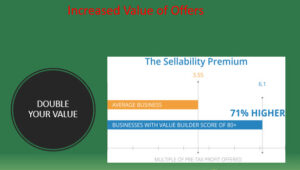Business Transformation is Easy When You Have SMART Goals in Mind
Business transformation starts at setting the goals you want to achieve. And you want them to be smart. Whether you are setting goals for your personal life, your business, or with your employees, goals that have been developed with the SMART principle have a higher probability of being achieved.
The SMART Principle
- Specific
Specific goals are clearer and easier to achieve than nonspecific goals. When writing down your goal, ask yourself the five “W” questions to narrow in on what exactly you are aiming for:
Who? Where? What? When? Why?
For example, instead of a nonspecific goal like, “get in shape for the summer,” a specific goal would be, “go to the gym three times a week and eat twice as many vegetables.” It will help you build a very precise road map and all the bits you need to take into consideration to carry out a perfect business transformation.
- Measurable
If you can’t measure your goal, how will you know when you’ve achieved it? Measurable goals help you clearly see where you are, and where you want to be. You can see change happen as it happens. Measurable goals can also be broken down and managed in smaller pieces. They make it easier to create an action plan or identify the steps required to achieve your goal, and business transformation strongly depends on ticking all the boxes. You can track your progress, revise your plan and celebrate each small achievement. For example, instead of aiming to increase revenue in 2009, you can set out to increase revenue by 30% in the next 12 months, and celebrate each 10% along the way.
- Achievable
Goals that are achievable have a higher chance of being realised. While it is important to think big, and dream big, too often people set goals that are simply beyond their capabilities and wind up disappointed. Goals can stretch you, but they should always be feasible to maintain your motivation and commitment. For example, if you want to complete your first triathlon but you’ve never run a mile in your life, you would be setting a goal that was beyond your current capabilities. If you decided instead to train for a five mile race in six months, you would be setting an achievable goal. 8
- Relevant
Relevant – or realistic – goals are goals that have a logical place in your life or your overall business strategy. The goal’s action plan can be reasonably integrated into your life, with a realistic amount of effort. For example, if your goal is to train to climb to base camp at Mount Everest within one year and you’re about to launch a start-up business, you may need to question the relevance of your goal in the context of your current commitments.
- Timely
It is essential for every goal to be attached to a time-frame –otherwise it is merely a dream. Check in to make sure that your time-frame is realistic – not too short, or too long. This will keep you motivated and committed to your action plan, and allow you to track your progress.




















